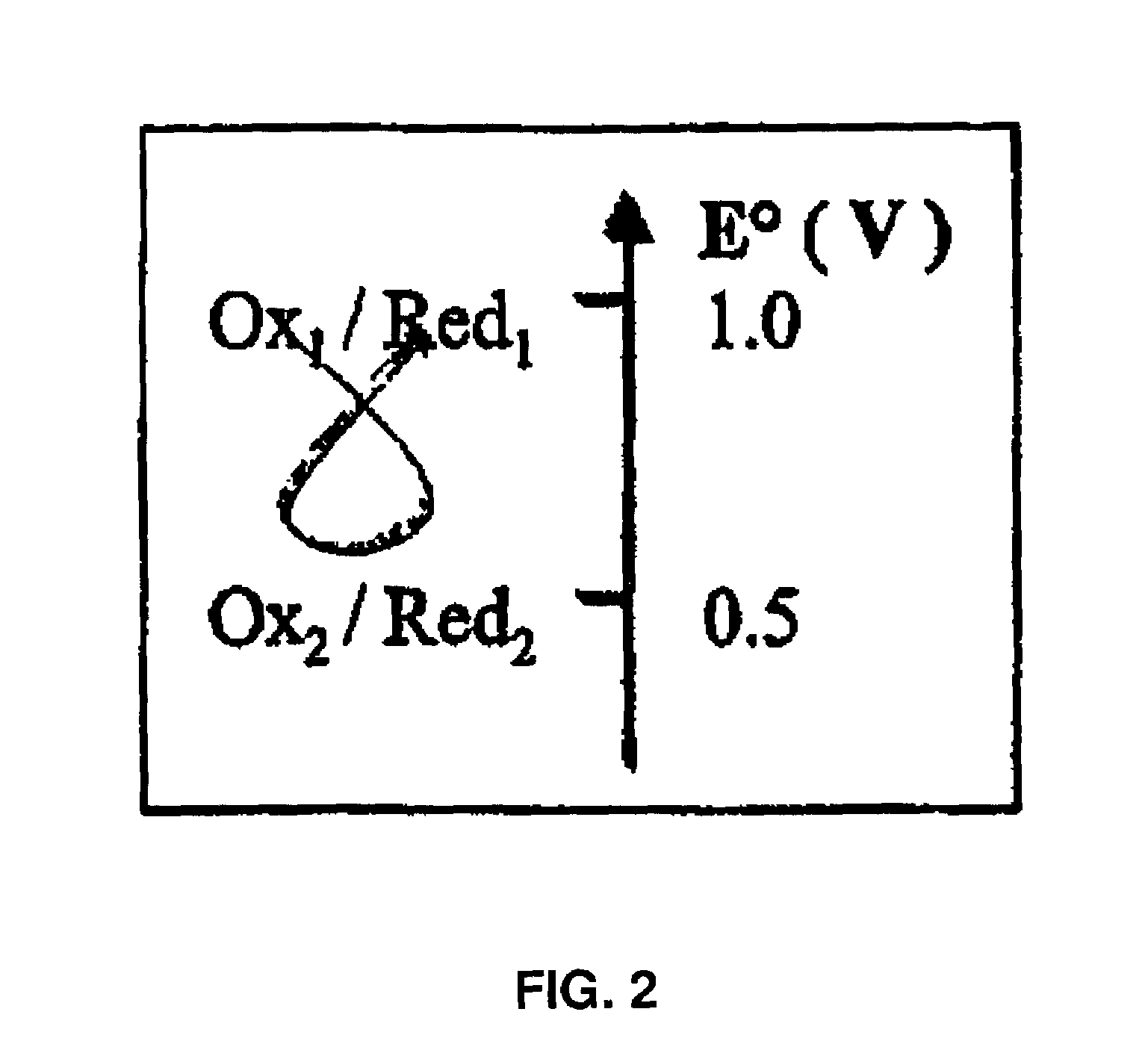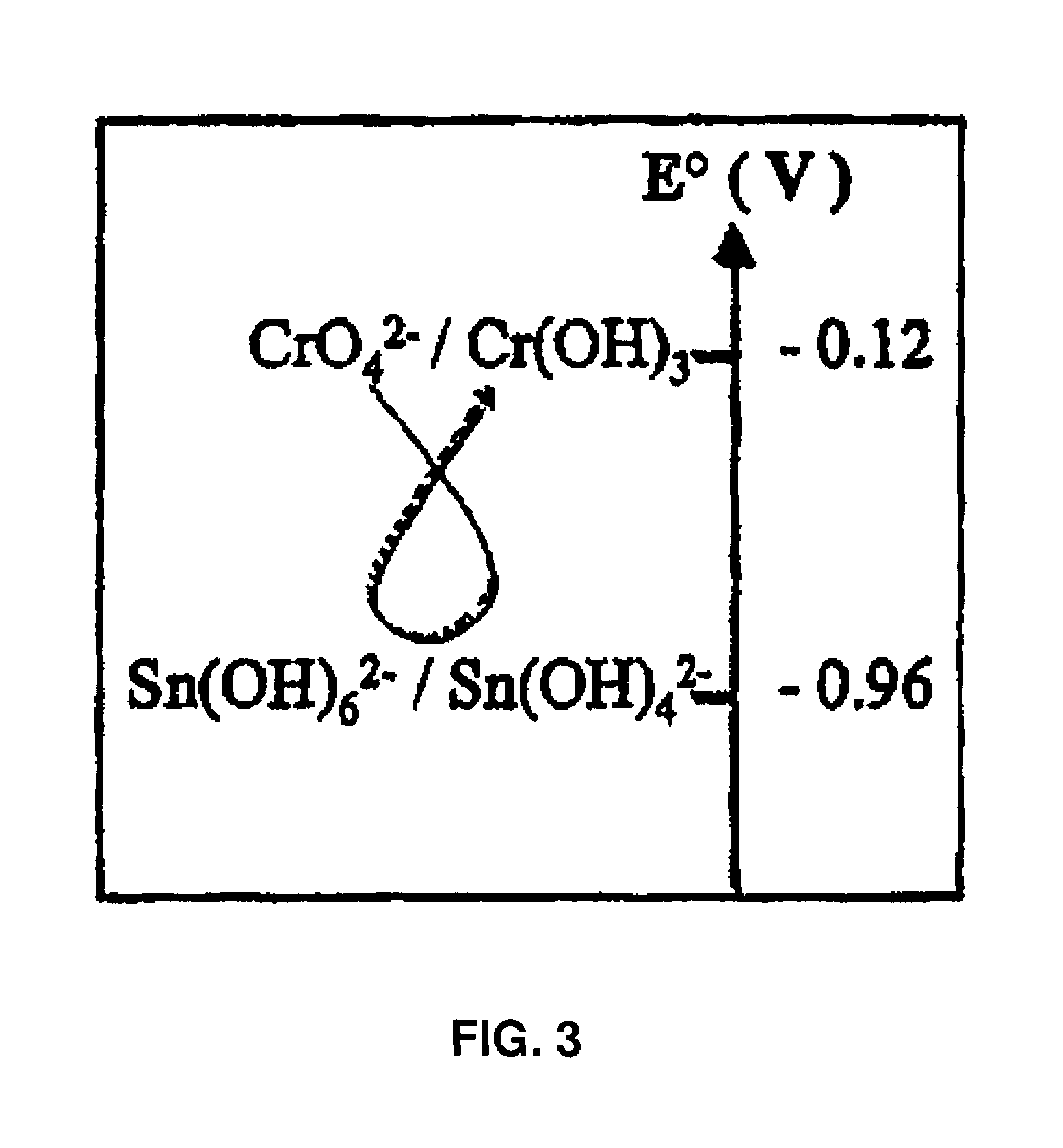Colloidal hydroxide aqueous suspension of at least one transition element serving to reduce chrome in cement
a technology of transition element and hydroxide, which is applied in the direction of tin oxides, transportation and packaging, mixing, etc., can solve the problems of ineffective reduction of chromium vi content of treated cements, maladaptive use of organic systems in practice, etc., and achieve high stability
- Summary
- Abstract
- Description
- Claims
- Application Information
AI Technical Summary
Benefits of technology
Problems solved by technology
Method used
Image
Examples
example 1
[0065]A suspension of tin hydroxide is prepared from a source of tin which can be tin chloride or tin sulphate according to the following protocol which comprises:
[0066]definition of the proportions between an alkaline agent which is an aqueous solution of sodium hydroxide (NaOH—N) and the tin source in order to transform this tin source into tin hydroxide [Sn(OH)2];
[0067]introduction of the tin source into the aqueous solution of sodium hydroxide in a slow and regular fashion, in order to avoid dismutation of the tin.
Consequently we observe:
[0068]the appearance of a white-yellow precipitate of Sn(OH)2;
[0069]a phenomenon of rapid decantation of the Sn(OH)2 precipitate revealing that an aqueous suspension of said Sn(OH)2 cannot be stable.
[0070]In order to create a stable suspension of tin hydroxide in its aqueous precipitation medium, a dispersing agent is implemented from a suspension of tin hydroxide of 30% concentration with respect to the quantity of water.
[0071]Three trials were...
example 2
[0085]A suspension of tin hydroxide is prepared from a tin source which can be tin chloride or tin sulphate according to the protocol which comprises the following steps:
[0086]definition of the proportions between an alkaline agent which is an aqueous solution of sodium hydroxide (NaOH—N) and the tin source in order to transform this tin source into tin hydroxide [Sn(OH)2] and obtain an aqueous suspension of tin hydroxide charged at 15% by weight in said hydroxide,
[0087]introduction of the tin source into the aqueous sodium hydroxide solution in a slow and regular fashion, in order to avoid dismutation of the tin,
[0088]the appearance of a white-yellow precipitate of Sn(OH)2;
[0089]the appearance of a phenomenon of rapid decantation of the Sn(OH)2 precipitate showing that an aqueous suspension of said Sn(OH)2 cannot be stable in this state,
[0090]the creation of a stable suspension of tin hydroxide in its aqueous precipitation medium, by implementation of a dispersing agent, starting f...
example 3
[0103]Aqueous suspensions of the hydroxides of tin, iron and manganese were prepared from sources of these various elements, which can be salts such as chlorides, sulphates or other salts, following the preparation protocol comprising the following steps:
[0104]definition of the proportions between an alkaline agent which is an aqueous solution of sodium hydroxide (NaOH—N) and the source of tin, iron, or manganese in order to transform these sources into the hydroxide of tin, iron, or manganese;
[0105]introduction of the source of tin, iron and manganese into the aqueous solution of sodium hydroxide in a slow and regular fashion, in order to avoid in particular the dismutation of the element implemented,
[0106]the appearance of a precipitate,
[0107]the appearance of a phenomenon of rapid decantation of the precipitated hydroxide showing that the aqueous hydroxide suspensions are not stable.
[0108]The creation of a stable suspension of the hydroxide of tin, iron and manganese in the aqueo...
PUM
| Property | Measurement | Unit |
|---|---|---|
| Fraction | aaaaa | aaaaa |
| Percent by mass | aaaaa | aaaaa |
| Percent by mass | aaaaa | aaaaa |
Abstract
Description
Claims
Application Information
 Login to View More
Login to View More - R&D
- Intellectual Property
- Life Sciences
- Materials
- Tech Scout
- Unparalleled Data Quality
- Higher Quality Content
- 60% Fewer Hallucinations
Browse by: Latest US Patents, China's latest patents, Technical Efficacy Thesaurus, Application Domain, Technology Topic, Popular Technical Reports.
© 2025 PatSnap. All rights reserved.Legal|Privacy policy|Modern Slavery Act Transparency Statement|Sitemap|About US| Contact US: help@patsnap.com



